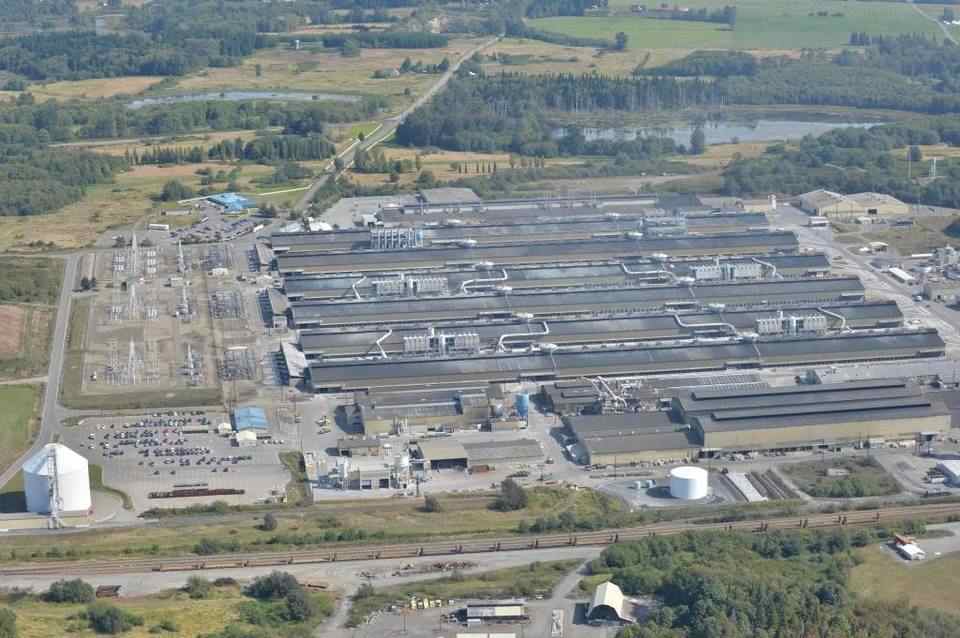forum
library
tutorial
contact

Aluminum Fight Proves Hydropower
is Green in Multiple Ways
by Kurt Miller
Spokesman-Review, April 27, 2022
|
the film forum library tutorial contact |

|
Aluminum Fight Proves Hydropower
by Kurt Miller
|
We simply cannot achieve our carbon reductions timeline and maintain
a reliable electricity grid without the lower Snake River dams.
 The lessons I learned in childhood from my parents often ring true in my adulthood, as is the case for many of us. My dad grew up on a farm in Salem, Oregon, and accordingly he possessed a farmer's wisdom. He taught me that things on a farm need constant care, or they won't be there when you need them.
The lessons I learned in childhood from my parents often ring true in my adulthood, as is the case for many of us. My dad grew up on a farm in Salem, Oregon, and accordingly he possessed a farmer's wisdom. He taught me that things on a farm need constant care, or they won't be there when you need them.
The same is true of our electric grid, particularly as it relates to our decarbonization objectives and the fate of the lower Snake River dams.
Snake River dam opponents claim that hydropower dams are no longer economic, and they can be easily replaced by wind or solar power plus batteries with little or no cost impact to customers.
The current debate over the restart of the Intalco Works aluminum smelter in Whatcom County exposes the fallacy of those arguments. The smelter's owners recently secured $10 million in taxpayer support that would allow them to manufacture "green" aluminum. It's green because the plant wants to buy its electricity from the Bonneville Power Administration, which provides nearly 100% carbon-free electricity to its customers, 85% of which comes from hydropower and another 11% from nuclear.
As a smelter supporter writes, providing BPA electricity would, "... reduce greenhouse gas emissions by 750,000 tons in Washington with modernized green-plant technology and an estimated 4 million tons globally each year by supplanting foreign coal-fired aluminum."
Where the electricity comes from matters; aluminum smelting is incredibly energy intensive. The anticipated average demand for the smelter is 405 megawatts. That's about 40% of Seattle's average electricity need. And, just like the rest of us, it needs this energy consistently -- not just when the wind is blowing or the sun is out.
Without the affordable and reliable energy produced by hydropower, project proponents suggest the economics for the plant in the cost-competitive world of aluminum simply don't work.
The rub is, BPA says it simply doesn't have the electricity to spare, given its obligations to nonprofit, consumer-owned utilities that serve many of the lowest income counties in the Northwest region.
Enter the debate over the Snake River dams, which produce about 1,000 megawatts of electricity, on average, and can peak to 2,500 megawatts or more during winter . BPA reports the electricity provided by these dams is among the least expensive of its entire hydropower fleet.
If the lower Snake River dams are removed, there will be that much less clean, affordable energy in the region, leading to more conflicts between stakeholders. Those conflicts will grow, as electricity demand rises in response to policies aimed at electrifying cars and buildings to help fight climate change.
This is where maintaining a reliable electric grid comes into view. We simply cannot achieve our carbon reductions timeline and maintain a reliable electricity grid without the lower Snake River dams.
A 2020 federal analysis shows losing the lower Snake River dams would double the region's risk of blackouts if the generating capacity isn't replaced. Even if we replace the dams with wind or solar plus batteries, carbon dioxide output would increase by more than 1 million metric tons per year, as the region would have to extend the use of existing fossil-fueled resources.
The inflationary pressures on electricity prices would also be astoundingly high. The same federal report indicates many communities could expect to see rate increases of up to 25% or more.
Removing these dams is not cost-effective. It's not clean. It is not equitable. And, as my dad would say, it's not wise.
Related Pages:
Investment Firm in Talks with BPA for Power Contract that Could Reopen Whatcom's Intalco by Dave Gallagher, Bellingham Herald, 1/28/22
learn more on topics covered in the film
see the video
read the script
learn the songs
discussion forum
